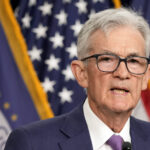Rising and Diminishing Expectations in the US
Most nations have passed through two different stages reflecting people’s feelings regarding the future; one is characterized by rising expectations, the other is characterized by diminishing expectations. The era of rising expectations in America came in the aftermath of the Second World War and lasted about 25 years, while the era of diminishing expectations appeared in the 1970s and became the dominant state of mind is 2000.
the Age of Rising Expectations is defined as “a historic ear characterized by a general human feeling that the future promises more than the past did, and readiness to enjoy the more that is expected to come.” And the Age of Diminishing Expectations is defined as “a historic era characterized by a general human feeling that the future does not promise as much as the past did, and a resigned acceptance of the less that is expected to come.” In both cases, however, people find themselves forced to make mental adjustments that influence their behavior, attitudes, habits, values, and living conditions.
Following the end of WW II in 1945, the western powers formed the United Nations and a few institutions to coordinate global political, economic, security, and financial affairs. These arrangements were meant to create a peaceful and prosperous world for all. Consequently, western people became more optimistic, and most African and Asian colonies gained independence, which caused most people to feel hopeful and turn their attention to working hard, enjoying life, and building wealth, causing expectations to rise rapidly.
However, the 1970s witnessed the failure of capitalism to prevent recurring economic recessions and inflation, the failure of communism to close the technological and economic gaps separating the West from the East, and the failure of nationalism to extend political independence to the sphere of economics. The failure of these caused optimism and rising expectations to end.
In 1981, President Ronald Reagan fired more than 11 thousand air traffic controllers, causing the fortunes of the American middle class to be undermined; In addition, The American, British and German leaders adopted the free market philosophy which was articulated by economist Milton Freedman who introduced his theory in an essay published by The New York Times; “A Friedman Doctrine: The Social Responsibility of Business is to Increase Its Profits”.Freedman argued that the only responsibility that companies have is to shareholders. (A Friedman Doctrine: The Social Responsibility of Business is to Increase Its Profits”. The New York Times Magazine, September 13, 1970).
As a result, caring for the poor and the public interest declined, greed and lust for money were legitimized, and the poor were marginalized. Subsequently, the numbers and power of the middle class declined. And since the middle class had been the most vibrant force in America, its decline weakened democracy and economy. And this made it difficult for the middle class to raise it voice and ask for a fair share of the income and wealth. So many of its members were forced to live in less desirable areas making upward mobility very difficult. And due to the COVID-19 pandemic, “nearly two-thirds of Americans, 63%, say they’ve been living paycheck to paycheck since the pandemic hit the US. https://www.cnbc.com/2020/12/11/majority-of-americans-are-living-paycheck-to-paycheck-since-covid-hit.html.
In 2000 a recession hit America and President George W. Bush cut taxes, and in 2001 the September 11 terrorist attack on New York and Washington occurred, leading Bush to invade Afghanistan in 2001 and Iraq in 2003. Both wars exposed American brutality as soldiers committed untold crimes against innocent people and caused around 10 million Iraqis and Afghanis to become refugees. And President Obama managed to turn Iraq, Sudan, Libya, Syria, and Yemen into failed states, causing an extra 15 million Middle Eastern people to become refugees. In 2008-2009 America experienced a severe economic and financial crisis that exposed the weakness of its systems. So America’s war crimes and failure to restructure its economic and financial systems caused the era of diminishing expectations to become an oppressive state of mind and state of living.
Between 1971 and 2021 the size of the American middle class declined by 10% and the quality of its life deteriorated. While the median household income in 2019 was $69,560, it declined to $67,521 in 2020. But for the Hispanics and Blacks, it was $55,31 and $45,870, respectively.
Meanwhile, the wealthiest 1% of Americans managed to control about $41.52 trillion in the first quarter of 2021, according to Federal Reserve data. Yet the bottom 50% of Americans controlled about $2.62 trillion only, which means that the wealthiest 1% had 16 times more wealth than those in the bottom 50%. Moreover, over 20% of the nation’s income goes to the top 1%, and the top 0.1% owns of the national wealth as much as the bottom 90%.
A report issued by Oxfam days ago says that the world’s 10 wealthiest men have increased their fortunes from $700 billion to $1.5 trillion since 2020. And while the richest men’s wealth has increased at a rate of $15,000 per second, inequality has contributed to the death of at least 21,000 people each day.
Promises that governments make but fail to fulfill, and popular expectations that prevail but never materialize cause people to lose hope and feel helpless and abandon their ambitions. And this causes continuity to replace change as a way of life, and conservatism to replace liberalism as a way of thinking. Due to these developments lower wages, higher unemployment rates, and widespread poverty fails to incite violence or cause popular unrest. A sign that society is losing its vitality and sense of purpose.
Disclaimer: The views and opinions expressed in this article are those of the authors and do not necessarily reflect the official policy or position of Newslooks.com







